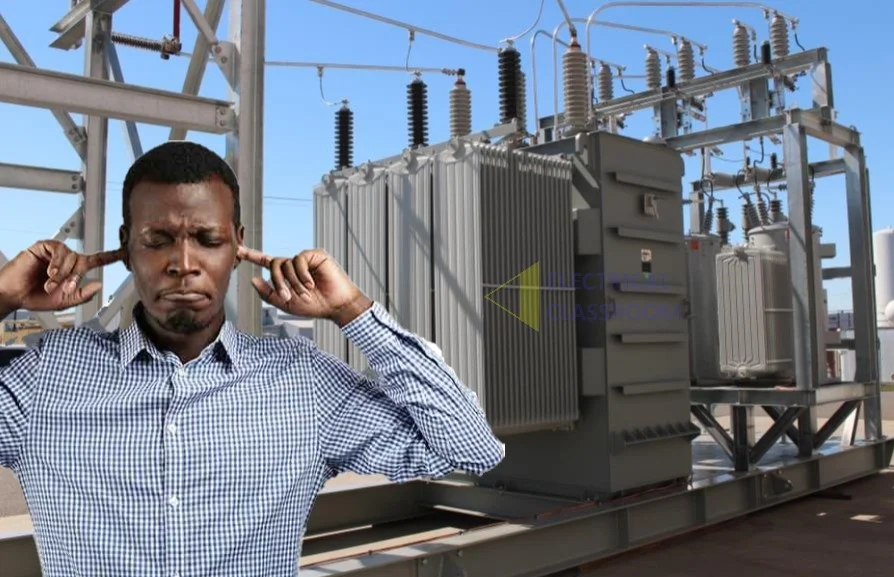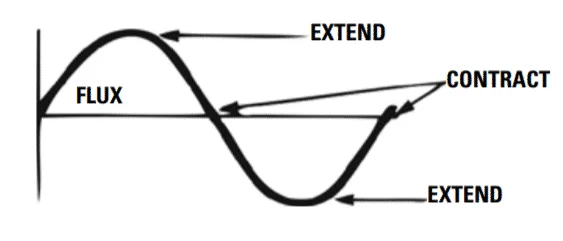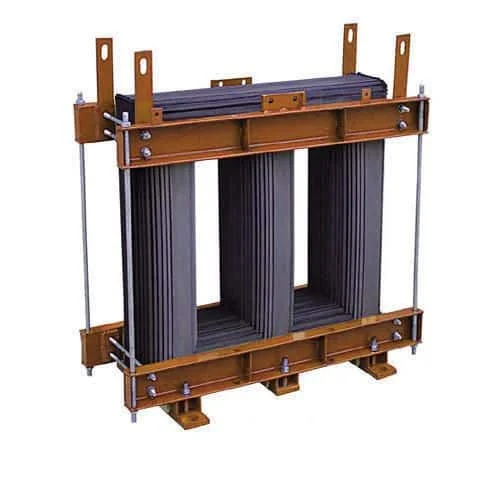Noise is an unpleasant, unwanted and annoying sound. Transformer noise, quite commonly known as the ‘humming sound or buzzing sound’ of transformer, is one of the major problems with large transformers. The noise from the transformers installed close to a residential area or an office could annoy the tenants.

Why do transformers make noise?
Even though there are no moving parts in a transformer, transformer hum or transformer noise is caused by a phenomenon called magnetostriction.
What is magnetostriction?
The property of a magnetic material to change its shape or dimension when places in a magnetic field is known as magnetostriction. Magnetic material consists of regions of uniform magnetic polarization. When a magnetic field is applied, the boundaries between these regions shifts and rotates which results in the change in dimension of the material. And when the magnetic field is taken away it goes back to its original shape and dimension. The degree of magnetization depends on the amount of flux or magnetic lines of force crossing the material.
Why magnetostriction causes transformer noise?
Transformer core is made up of several laminated silicon steel sheets in order to reduce core losses and heating effect. When an alternating voltage is applied, an alternating magnetic field is produced which expands and contracts the core twice during a full cycle of applied AC voltage. For example, if the frequency of the applied voltage is 50Hz, the core changes its shape 200 times time (100 expansions and 100 contractions). Also, these structural changes are not uniform throughout each sheet.

Since the core consists of several numbers of sheets, the expansion and contraction of each sheet with respect to each other causes vibration in the core and results in noise. These dimensional changes are normally very small and therefore cannot be seen by a naked eye. The amount of noise produced depends on the amount of magnet flux.

Now we know what causes transformer noise or transformer hum. As it is related to dimensional variations of the transformer, the effect is not just limited to air borne noise but also mechanical vibrations. Hence it is vital to bring down the rate of vibration of core.
Transformer noise reduction techniques
Since the magnetostriction is related to the amount of flux, to reduce magnetostriction it is necessary to reduce the amount of flux. But reducing the amount of flux is not so easy as it seems.
Transformers are designed based on the system requirements. Hence the number of turns of winding is calculated based on the system voltages and other practical considerations. Hence reducing the number of turns to reduce the amount of flux will not work out. Therefore, the only way to reduce noise is to construct the core properly. Eliminating air gaps in the core, using laminations of consistent thickness, using a fewer number of bolts, proper varnishing of laminations and clamping the core tightly and evenly can help. Apart from these putting the transformer in an enclosure or using acoustic damping materials can also help in reducing the noise.
Relationship between the transformer noise the load
The transformer hum will be slightly more at no load and reduces by increase in load. This is because, of magnetizing current which causes unbalanced magnetic field between the primary and the secondary (Secondary current is zero during no-load, which cause the field imbalance).
Does transformer noise increase with age?
You guessed it right, noise increase with age. The adhesive holding the core laminations breaks over time result in an increase in noise.
Apart from magnetostriction, electromechanical forces existing in the transformer winding and the cooling systems also contribute to transformer noise.
Permissible noise levels
The transformers and corresponding sound levels per NEMA ST-20 are as follows.
| KVA | NEMA Standard Sound Level |
|---|---|
| 0 – 9 | 40 dB |
| 10 – 50 | 45 dB |
| 51 – 150 | 50 dB |
| 151 – 300 | 55 dB |
| 301 – 500 | 60 dB |
| 501 – 700 | 62 dB |
| 701 – 1000 | 64 dB |
Summing up
- Humming sound of transformer is caused due to magnetostriction of transformer core.
- It is associated with expansion and contraction of core laminations.
- The frequency of noise is twice the frequency if applied input voltage.
- Noise can be air borne as well as ground borne (vibrations).
- Transformer noise cannot be eradicated completely but certain design considerations can help in reducing it.
- Transformer loading has a small effect over the noise.
I just used your article to explain why the UPS transformers are making noise. I told them earlier but they acted like I was making things up so I showed them your article. Suddenly now they are all experts on transformers.
That you, for explaining this phenomonon. Every morning, around 1:30am until about 5:30 am this loud vibration sounding hum sweeps over. I wondered why it’s only at night that I hear it. It had been some daytime noise too, but not lately. Regardless, since there isn’t the load at night, that may explain the noise.
I CANT SLEEP with all that racquet though. please make it stop.